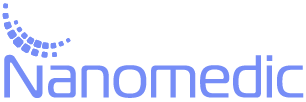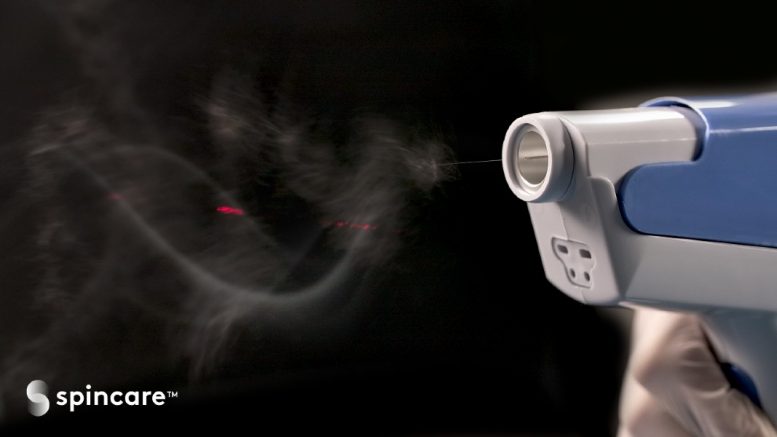Leading Expert in Reconstructive Medicine and Burn Care plus a Veteran Medical Entrepreneur Join the Company amid Global Expansion of Novel Spincare System
Nanomedic Technologies, an innovator in Electrospun Healing Fiber (EHF™) technology for wound healing and skin regeneration, today announced the appointment of two new members to its Advisory Board: Professor. Jan Plock, MD, an international authority in microsurgery, burn reconstruction, and wound healing; and Mark Darty, a serial entrepreneur with over three decades’ experience in technology innovation, commercialization, and operations management.
Plock and Darty join Nanomedic as the company is expanding commercial availability of its flagship product, the Spincare System, to healthcare facilities across Europe. Spincare is the first CE-cleared portable electrospinning wound treatment device on the market, and Nanomedic has also begun preparations to enter the U.S. market.
 “Nanomedic represents a breakthrough for effectively treating burns, chronic and surgical wounds, providing an easy-to-use solution that enables rapid healing and minimal scarring,” said Professor Jan Plock, MD. “Given the tremendous potential of the company’s proprietary Electrospun Healing Fiber technology, I am keen to contribute my knowledge of regenerative medicine through my position with the Advisory Board.”
“Nanomedic represents a breakthrough for effectively treating burns, chronic and surgical wounds, providing an easy-to-use solution that enables rapid healing and minimal scarring,” said Professor Jan Plock, MD. “Given the tremendous potential of the company’s proprietary Electrospun Healing Fiber technology, I am keen to contribute my knowledge of regenerative medicine through my position with the Advisory Board.”
Professor Plock currently serves as Chief of Plastic Surgery and Hand Surgery at the Aarau Canton Hospital (KSA), the largest hospital in the Aargau region, and one of the three largest hospital centers in Switzerland. He previously served in multiple roles at the University Hospital of Zurich, including Director of the Burn Center, Director of the Reconstructive Transplantation Program, and Director of the Post-Bariatric Body-Contouring Program. He was made a Fellow of the European Board of Plastic Surgeons in 2009 and earned his Adjunct Professorship from the University of Zurich in 2020.
“The ability to swiftly print a personalized healing matrix directly onto a patient’s wound provides significant benefits for a wide range of healthcare applications,” said Mark Darty. “I am delighted to join Nanomedic at this exciting point in the company’s development and look forward to helping guide this important endeavor.”
For the last several years, Mark Darty has served as President and CEO of HyperMed Imaging, a market leader in hyperspectral medical imaging, having built the company from inception to initial revenue status in the US, Europe and Asia. He invented the company’s new technology and secured FDA clearance, European CE Mark, ISO13485 certification and a new US insurance reimbursement code. Prior to founding HyperMed, he was Executive Vice President of Operations for medical device company Luminetx and held senior roles in large corporations in the consumer electronics and aerospace industries including Boeing/McDonnell Douglas, General Dynamics and Brother International.
“We are proud to welcome two new highly esteemed industry experts to Nanomedic’s Advisory Board,” said Dr. Chen Barak, Chief Executive Officer of Nanomedic. “Professor Jan Plock contributes significant value through his clinical expertise in reconstructive medicine and burn care while Mark Darty strengthens our business efforts in ongoing technological innovation and the U.S. commercialization. Incorporating their joint expertise will greatly support our efforts as we expand access of our Spincare System throughout Europe and take on the U.S. market.”
Nanomedic’s handheld Spincare System enables faster, pain-reduced healing based on its proprietary Electrospun Healing Fiber (EHF™) technology. Through real-time printing of a nanofibrous matrix directly onto a wound, Spincare treats complicated injuries with a single application, eliminating the need for painful re-dressings. Nanomedic’s matrix provides a transparent protective physical barrier, allowing for easy monitoring of the healing process while reducing risk of infection. The unique matrix, which bio-mimics the structure of the human extracellular matrix, can be enhanced with a variety of additives for a wide range of complex clinical applications.

